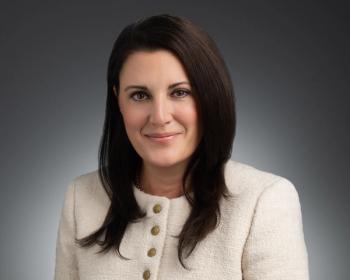
Oncology NEWS International
- Oncology NEWS International Vol 15 No 11
- Volume 15
- Issue 11
Breast Ultrasound Referrals Often Lack Important Info
There is a role forultrasound in breast cancer screening anddiagnosis, but many physicians do notseem to know what it is, according toAnnette Brown, MD, a radiologist in theMammography Division of Long IslandCollege Hospital in Brooklyn. A
NEW YORK--There is a role forultrasound in breast cancer screening anddiagnosis, but many physicians do notseem to know what it is, according toAnnette Brown, MD, a radiologist in theMammography Division of Long IslandCollege Hospital in Brooklyn. At the"Breast Cancer in Women of Color"meeting, Dr. Brown expressed her frustrationor "gripes" as she put it.
She called ultrasound the first line ofdefense for women under 40 who have amass, in order to spare them exams involvingradiation. "My gripe with anyphysician who is here," she said, "is whenyou send a patient for a sonogram, youcan't just say 'bilateral ultrasound' or 'ultrasoundright breast' and leave it at that.You have to say what you are looking for.Is there a mass in the breast? Where is it?Other than that, we're on a fishing expedition,and we may or may not find it."
Dr. Brown told ONI that she gets requestsfor bilateral ultrasounds every day."You have to waste your time callingthem. 'Excuse me, doctor, where is it?'Otherwise you are roaming around seeingwhat you bump into. If you cannotsay for sure that a mass is a simple cyst,then you have to do something about itand not say you didn't see it."
There are patients for whom such a"fishing expedition" makes sense, shesaid, eg, a young patient with densebreasts and a strong family history ofbreast cancer. "Because she has densebreasts, you are probably not going to seeanything on the mammogram. She deservesa second look with anything youhave. I think in a patient like that, youhave to go roaming around the breastand make sure there is nothing there.The problem, of course, is that such aggressivescreening can lead to more unnecessarybiopsies."
Women with dense breasts who havehad breast cancer also deserve screeningsonograms; even those without densebreasts deserve that second look, she said.'Of course, I explain the drawbacks tothe patient and the fact that we may notalways find an existing mass."
Although Dr. Brown feels ultrasoundis not ready for prime time as a breastscreening tool in the general population,still "it's a wonderful exam," she said. "Itgives us a lot of information and candistinguish between a cyst and a solidmass. However, since it is done with ahand-held transducer, if the technologistdoesn't put the transducer where theproblem is, we're not going to have apicture of it."
She further noted that ultrasound willnot find very small lesions in the breastor show lesions that have the same cysticproperties as the surrounding tissues ofthe breast. "The other problem is fattybreasts. I sometimes get a request for anultrasound, and find that the woman hasfatty breasts. Ultrasound doesn't like fat,"Dr. Brown said.
Articles in this issue
about 19 years ago
High ERCC1 Levels Predict Cisplatin Resistanceabout 19 years ago
CT Screening Detects Curable Stage I Lung Cancerabout 19 years ago
Triple-Negative Ca’s Respond to Optimized Taxane Chemotherapyabout 19 years ago
Avastin Approved as First-Line Rx of Nonsquamous NSCLCabout 19 years ago
Rituxan Receives FDA Approval for 2 New NHL Indicationsabout 19 years ago
Lapatinib Benefit Seen in Inflammatory Breast Cancerabout 19 years ago
Sinking Health Care Ship Could Bring Down the Economyabout 19 years ago
FDA Okays Zolinza for CTCL Skin LesionsNewsletter
Stay up to date on recent advances in the multidisciplinary approach to cancer.

















































































